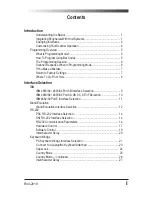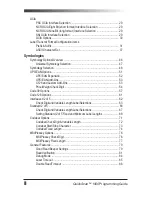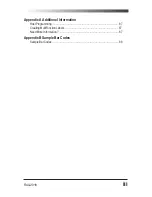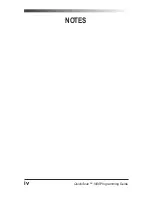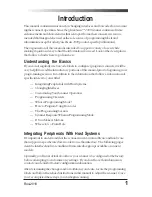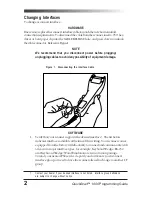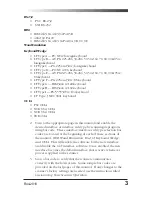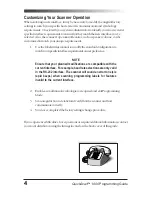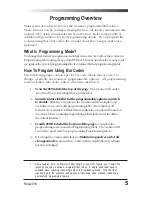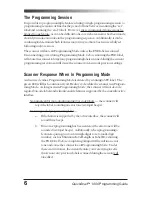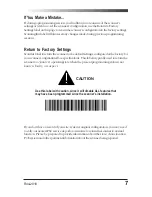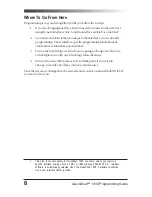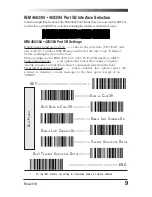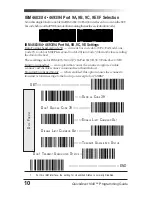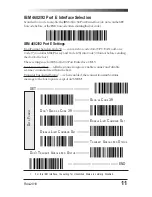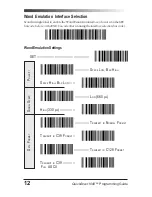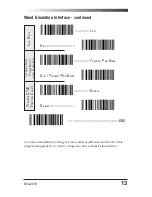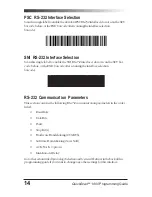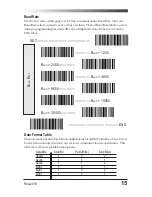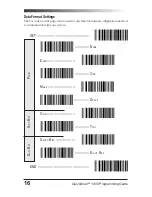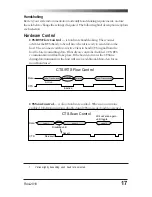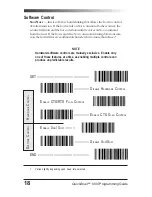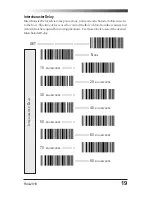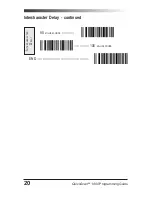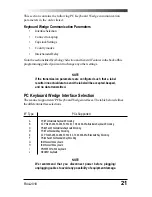
6
QuickScan™ 1000 Programming Guide
The Programming Session
It is possible to program multiple features during a single programming session (a
programming session is defined as the period of time between scanning the “set”
label and scanning the “end” label). However, it is recommended that sessions be
limited to one feature, as it can be difficult to discover where an error has been made,
should you make a mistake in the programming sequence. Additionally, it can be
confusing to determine which features may or may not have been successfully set
following such a session.
The scanner will not exit Programming Mode unless the END label is scanned.
Disconnecting power during Programming Mode, before scanning the END label,
will cause the scanner to forget any programming labels scanned during the current
programming session and will cause the scanner to return to its previous settings.
Scanner Response When In Programming Mode
As discussed earlier, Programming Mode is entered by scanning a SET label. The
green LED will flash continuously at 1Hz duty cycle while the scanner is in Program-
ming Mode. As long as it is in Programming Mode, the scanner will not decode
regular bar code labels and will only enable features supported by the currently active
interface.
Scanning regular (non-programming) bar code labels — the scanner will
reject the label, sounding an error tone (six rapid beeps).
Scanning a valid programming label —
a.
If the feature is supported by the active interface, the scanner will
sound three beeps.
b.
If incorrect programming has been entered, the error tone will be
sounded (six rapid beeps). Additionally, when programming a
feature requiring you to scan single digits to set a multi-digit
number, such as Minimum Label Length or Label ID, scanning
the END label before completing all input will result in an error
tone and cause the scanner to exit Programming Mode. Under
these circumstances, the current feature you were trying to set is
thrown out; any previous labels scanned during the session will
take effect.



